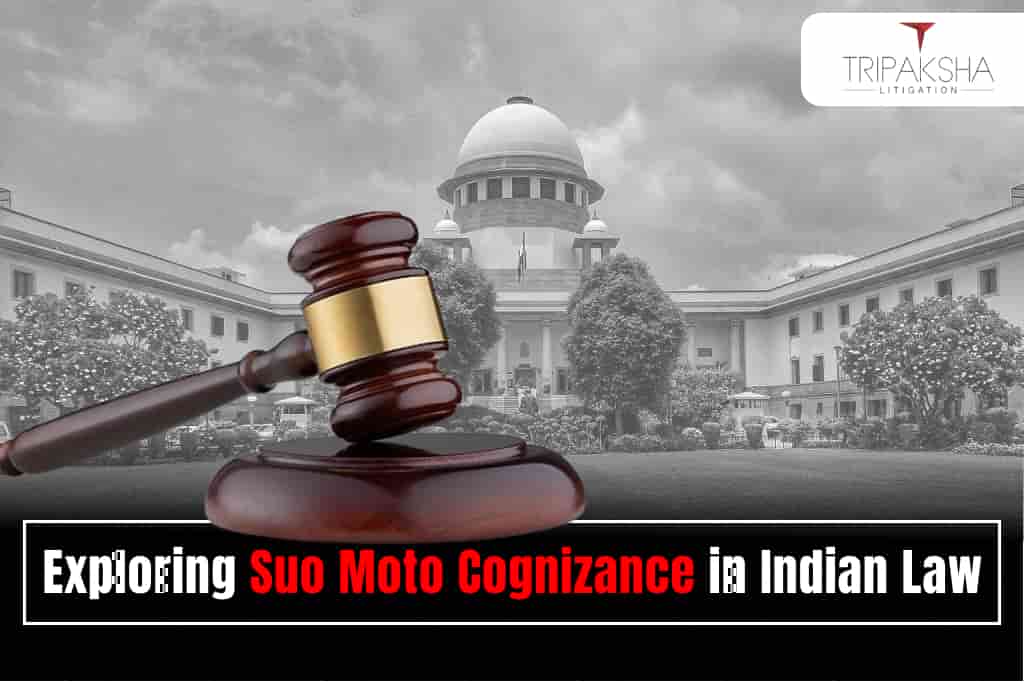Literal Meaning On its motion
Introduction
In the dynamic arena of Indian law, Suo Moto Cognizance stands as a pillar of judicial activism, enabling courts to intervene autonomously in matters of public interest and legal significance. Stemming from the Latin term meaning “on its motion,” Suo Moto Cognizance empowers courts to initiate legal proceedings without the need for a formal petition, thereby expediting the dispensation of justice. This article explores the constitutional foundation, operational framework, protective role, and human rights enforcement aspects of Suo Moto Cognizance within the Indian legal landscape.
Constitutional Foundation
The constitutional underpinnings of Suo Moto Cognizance in India are enshrined primarily in Articles 32 and 226 of the Indian Constitution. Article 32 confers upon the Supreme Court the power to issue writs for the enforcement of fundamental rights, while Article 226 empowers High Courts to issue writs, orders, or directions for the enforcement of fundamental rights as well as for any other purpose. These provisions serve as the bedrock for judicial intervention in matters of public interest and individual rights. Additionally, Article 131 of the Indian Constitution grants the Supreme Court original jurisdiction to adjudicate disputes between the Government of India and one or more States or between the Government of India and any State(s) on one side and one or more States on the other. This broad jurisdictional mandate allows the Supreme Court to exercise Suo Moto Cognizance in matters of national significance or involving constitutional interpretation.
Operational Framework
Suo Moto Cognizance finds manifestation in various legal scenarios, including cases of contempt of court, reopening of adjudicated matters based on new evidence, and addressing systemic injustices. Courts have the discretion to initiate proceedings on their own motion when they become aware of issues that warrant judicial intervention, even in the absence of formal complaints or petitions from the parties involved. One of the most notable applications of Suo Moto Cognizance is in cases of contempt of court, where courts can take action on their own volition against individuals or entities that obstruct the administration of justice or show disrespect towards the judiciary. This proactive stance reinforces the authority of the courts and ensures the integrity of the legal process. Moreover, Suo Moto Cognizance can be invoked to reopen old cases if fresh evidence comes to light that may alter the outcome of the original judgment. This serves as a mechanism for correcting miscarriages of justice and upholding the principle of fairness in legal proceedings. In addressing systemic injustices, courts may take Suo Moto action to remedy widespread malpractices or violations of fundamental rights. This proactive approach enables the judiciary to safeguard the rights of individuals and uphold the rule of law, even in the absence of formal complaints from aggrieved parties.
Conclusion
In conclusion, Suo Moto Cognizance embodies the proactive ethos of the Indian judiciary, empowering courts to uphold the principles of justice, fairness, and accountability. Its judicious exercise reinforces the foundational principles of constitutionalism and ensures the protection of individual liberties within the Indian polity. As the custodian of justice, the judiciary plays a pivotal role in safeguarding the rights of citizens and upholding the rule of law. Suo Moto Cognizance serves as a potent tool in this endeavor, enabling courts to intervene promptly and decisively in matters of public interest and legal significance.
You may contact me for consultation or advice by visiting Contact Us and Call us

